Veraison: The Critical Stage in Grape Ripening
Veraison marks the onset of ripening in grapes, a pivotal transition in the lifecycle of the grapevine. During this stage, a series of chemical and physiological changes prepare the fruit for harvest, shifting the vine’s energy focus from energy creation (photosynthesis) to energy consumption.
The fruit begins to accumulate sugars, break down acids, and develop Anthocyanins—the pigments responsible for the vibrant colour in grapes. Let’s dive into the key chemical processes that define this crucial period.
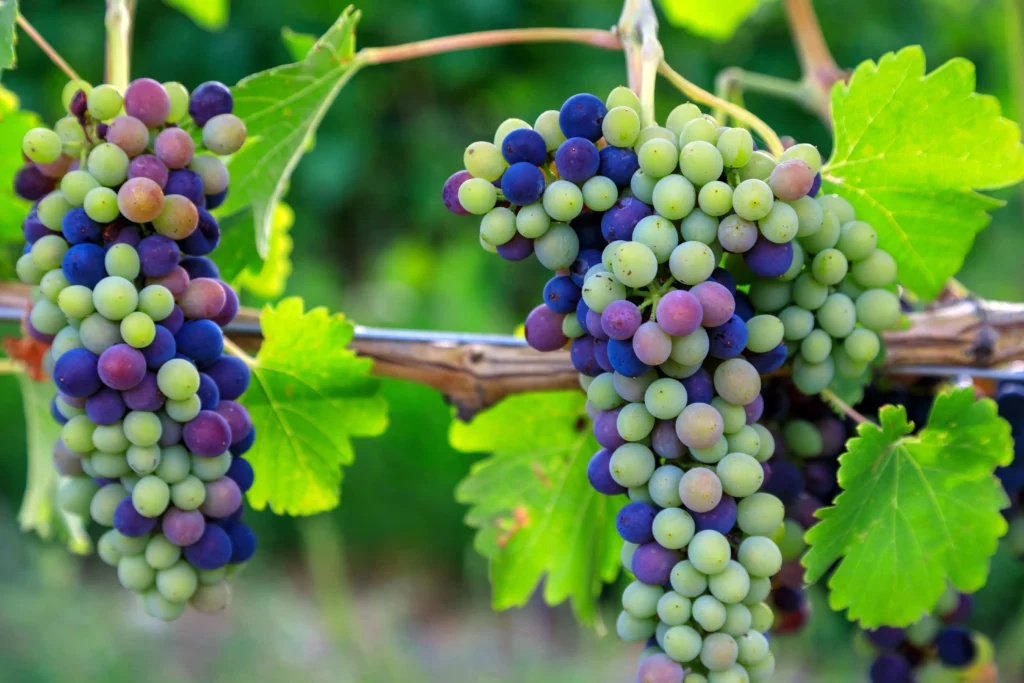
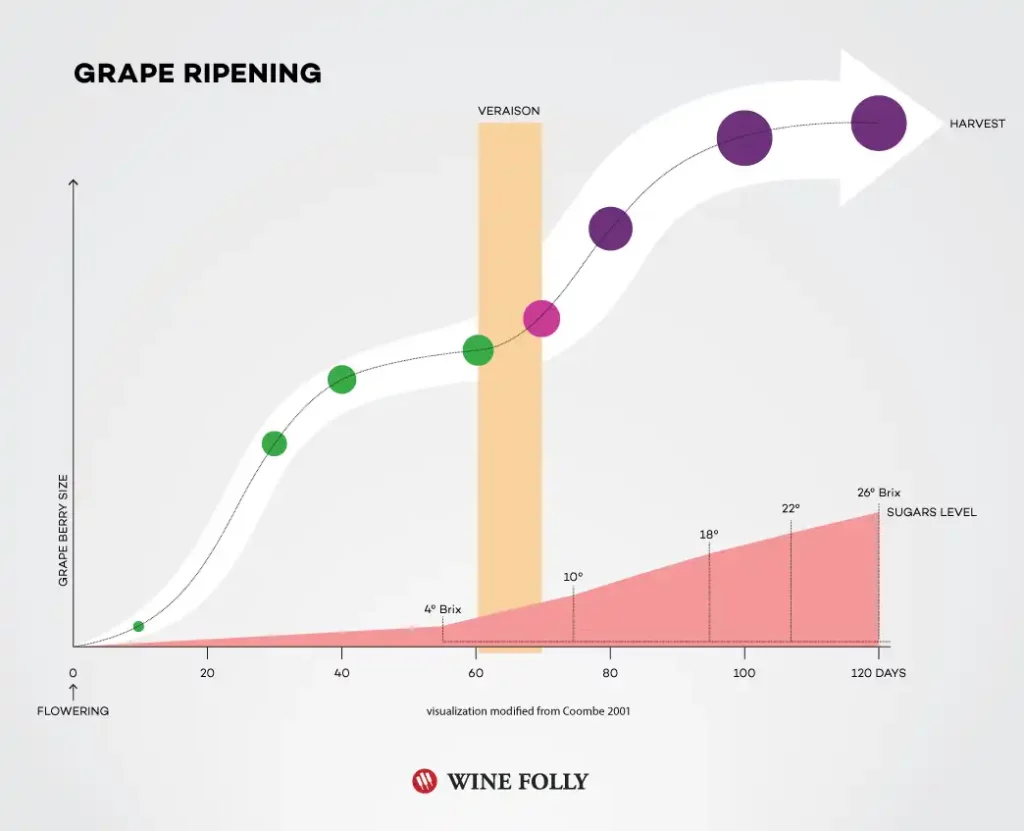
Sugar Accumulation: The Sweetening Process
- Enzymatic Breakdown: As Veraison begins, the grapevine continues to perform photosynthesis, converting starches into glucose and fructose, which are measured in Brix, the sugar concentration indicator.
- Key Enzymes: Invertase plays a crucial role by breaking down sucrose into glucose and fructose, while glucose transporters help move sugars into the berries.
- Concentration Changes: The increase in sugar concentration depends on sugar import from the leaves, sugar metabolism within the berries, and dilution from water import. The leaf area to fruit weight ratio (LA/FW) is key in determining how much sugar is transported to the fruit.
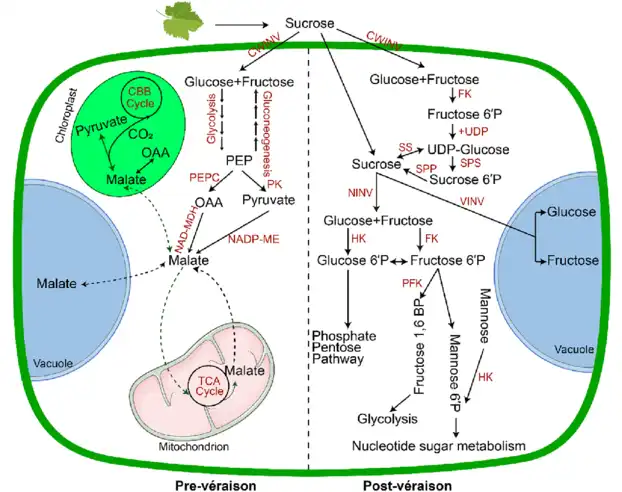
Acid Breakdown: Sweetening the Taste
- Decreasing Acidity: During Veraison, the grape’s acidity decreases due to the breakdown of malic and tartaric acids.
- Malic Acid: Converted into other compounds, contributing to the softening and less tart flavour of the grape.
- Tartaric Acid: Also decreases but more slowly.
- Taste Impact: The reduction in acidity makes the grapes taste sweeter, which is essential for achieving the ideal balance of flavour at harvest.
Anthocyanin Synthesis: The Colour Transformation
- Colour Development: In red, purple, and black grapes, veraison triggers the production of anthocyanins, the pigments responsible for the changing colour of the fruit’s skin.
- Enzyme Activity: Enzymes like UDP-glucose and flavonoid 3-O-glucosyltransferase (UFGT) become more active, leading to a surge in anthocyanin accumulation.
- Environmental Sensitivity: Anthocyanin levels can vary based on grape variety, location, and cultural management practices, and are sensitive to factors like temperature and sunlight.
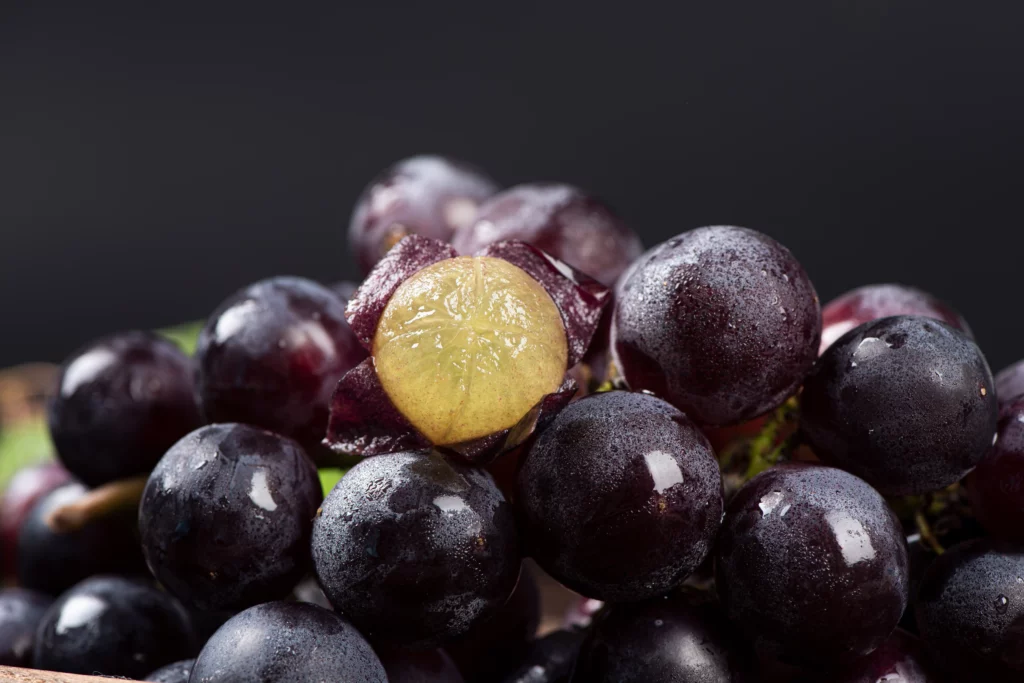
Berry with broken berry skin and clear pulp.
This image demonstrates that all the anthocyanin
pigments are located in the berry skin tissues.

Chemical Structure of Anthocyanin in Grapes
Changes in Organic Acids & Phenolic Compounds
- Other Organic Acids: While malic and tartaric acids decrease, other acids such as citric acid may remain stable, contributing to the overall reduction in acidity.
- Phenolic Compounds: The accumulation of tannins, especially in red grape varieties, begins during veraison. These tannins play a crucial role in the texture and mouthfeel of the grape, which influences wine quality.
- Aromatics: The formation of aromatic compounds, including esters and terpenes, ramps up, contributing to the fruity and floral notes of the ripe grape.
Berry Softening: Texture Transformation
- Water Movement: As water accumulates in the berry, it begins to enlarge and soften, facilitated by changes in the cell wall and the activity of water channels (Aquaporins).
- Berry Expansion: This expansion also affects the texture, making the grapes more palatable and preparing them for harvest.
Nutrient Balance: Essential for Optimal Ripening
The right balance of nutrients is critical for optimal grape ripening. Here’s how key nutrients contribute to the verasion process:
- Nitrogen (N): Crucial for enzyme synthesis and overall plant health, ensuring balanced ripening
- Potassium (K): Supports sugar accumulation and colour development. It also regulates water and nutrient movement
- Phosphorus (P): Powers energy-rich compounds that fuel metabolic processes
- Calcium (Ca): Stabilizes cell walls, maintaining berry firmness and aiding hormone regulation
- Magnesium (Mg): Essential for photosynthesis and the conversion of starches into sugars
- Sulfur (S): Contributes to aroma development and protein synthesis during ripening
- Iron (Fe): Supports chlorophyll production, ensuring continued photosynthesis
- Boron (B): Aids sugar transport from vine to berry, promoting sugar accumulation
- Zinc (Zn): Vital for enzyme function and secondary metabolite synthesis
- Copper (Cu): Supports pigmentation and flavor development
- Manganese (Mn): Enhances photosynthesis and supports secondary metabolite accumulation
- Molybdenum (Mo): Helps reduce nitrates, supporting proper ripening
- Cobalt (Co): Extends the lifespan of the plant and inhibits unwanted processes like ethylene formation
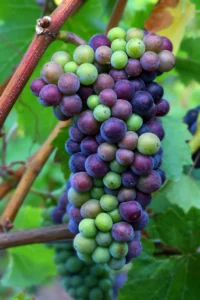
Give Your Grapes the Final Push with Kendon High K
Kendon High K is a broad-spectrum liquid fertiliser enriched with N, P, K, and above mentioned key chelated trace elements. Designed to provide a final boost during veraison, it helps unlock the full genetic potential of your vines. The right nutrient balance ensures that your grapes reach their optimal sugar levels, balanced acidity, and desirable flavour and colour profiles—essential for a perfect vintage.
Ready to Perfect Your Harvest?
Give your crop the final push with Kendon High K and watch your grapes achieve their full potential during the crucial veraison phase.
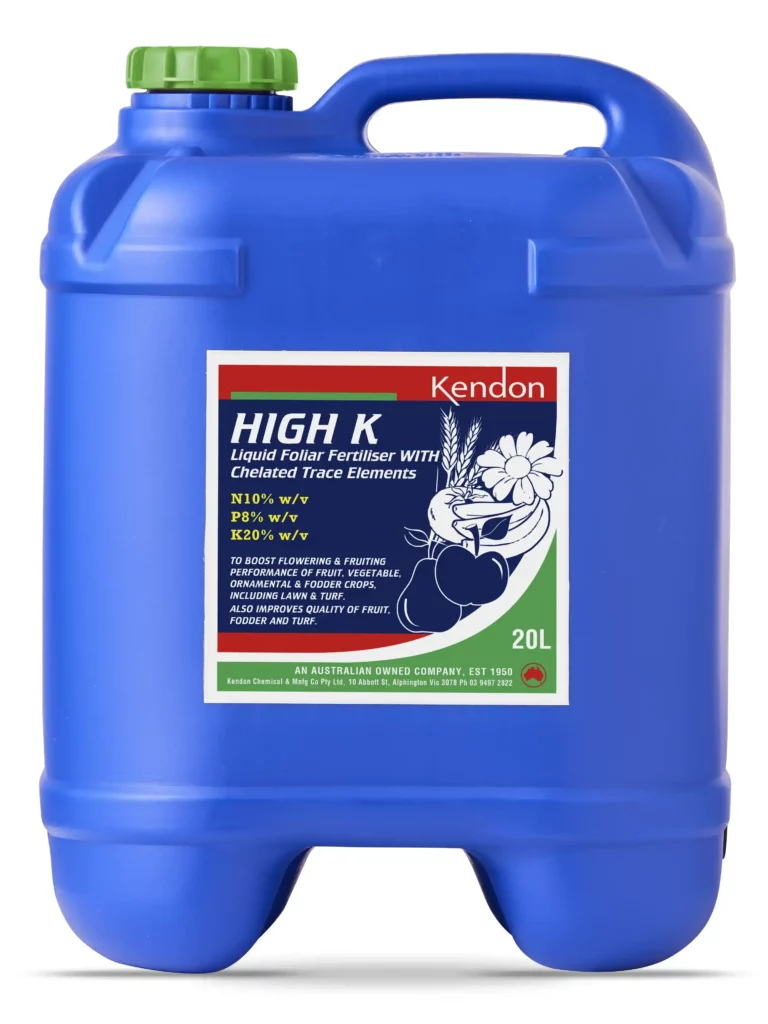
Contact us today to learn more about how Kendon High K can benefit your vineyard – call (03) 9497 2822